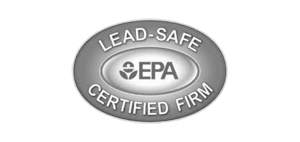When a fire occurs, the immediate danger is the damage it causes to property and the risk of personal injury. However, fire damage can also pose significant health risks. The aftermath of a fire can release harmful toxins and chemicals into the air, leading to short-term and long-term health problems.
It is essential to understand the dangers of fire damage, so you can take necessary precautions to protect yourself and your loved ones. By knowing the health risks and common toxic substances associated with fire damage, you can make informed decisions and take action to minimize your exposure.
Key Takeaways
- Fire damage can release harmful toxins and chemicals into the environment.
- Exposure to fire damage can cause short-term and long-term health problems.
- Understanding the health risks and common toxic substances associated with fire damage is crucial.
- Take necessary precautions to protect yourself and minimize your exposure to harmful substances.
- Seek professional assistance for fire damage cleanup to ensure your safety.
Understanding the Chemical Composition of Fire
As previously mentioned, fire is a complex chemical reaction that can result in the release of various toxic substances into the environment. The chemical composition of fire is made up of multiple compounds that can contribute to the toxicity of fire damage.
One of the most common compounds released during a fire is carbon monoxide. This odorless, colorless gas is incredibly dangerous as it can displace oxygen in the bloodstream, leading to asphyxiation. Formaldehyde is also released during a fire and is a potent irritant that can cause skin, eye, and respiratory irritations.
Volatile organic compounds (VOCs) are another common group of substances released during a fire. These toxic chemicals can have long-term health effects and are known to cause both short-term and long-term health problems, such as headaches, dizziness, liver damage, and even cancer.
Understanding the chemical composition of fire and how it can contribute to the toxicity of fire damage is crucial for protecting yourself and others. In the next section, we will discuss the specific health risks associated with fire damage.
Health Risks of Fire Damage
Exposure to fire damage can have severe health effects on individuals. It is crucial to understand the specific health risks associated with fire damage, so you can take necessary precautions and seek medical attention if needed.
Respiratory problems: Inhaling smoke and soot during a fire can cause respiratory issues, such as coughing, shortness of breath, and lung damage. Prolonged exposure can also increase the risk of developing chronic respiratory conditions.
Skin irritations: Contact with fire residues and chemicals can cause skin irritation, rashes, and burns.
Eye irritation: Exposure to smoke and toxic substances can cause eye irritation, redness, and watering.
Long-term complications: Exposure to certain toxic compounds found in fire residues can lead to long-term health complications, such as cancer, neurological damage, and reproductive issues.
To protect yourself and your loved ones from these health risks, it is essential to seek professional assistance for fire damage cleanup. Wear proper protective gear when handling fire residues, and contact a doctor if you experience any symptoms related to fire damage exposure.
Toxic Substances in Fire Damage
When a fire breaks out, the resulting damage can go beyond what is visible on the surface, introducing a wide range of toxic substances into the air and surrounding environment. These substances can have significant negative impacts on your health, long after the fire has been put out. Below, we will explore the various toxic compounds commonly found in fire residues:
| Compound | Health Effects |
|---|---|
| Carbon Monoxide | Can cause headaches, nausea, confusion, and even death at high levels of exposure. |
| Formaldehyde | A known carcinogen that can cause respiratory problems, eye irritation, and skin rash. |
| Volatile Organic Compounds (VOCs) | Can cause eye, nose, and throat irritation, as well as headaches and nausea. Long-term exposure to certain VOCs can lead to cancer. |
If you have been exposed to fire damage or suspect that you have, it is important to seek medical attention immediately. In addition to toxic compounds, there may also be other physical hazards, such as sharp debris or unstable structures. Professional fire damage cleanup services can ensure the safe and thorough removal of all hazardous materials. By taking the necessary precautions, you can protect your health and well-being even after the flames have been extinguished.
Conclusion
As discussed, fire damage can pose significant health risks due to the toxic substances it releases into the environment. To protect yourself and those around you, it’s crucial to take appropriate safety measures and seek professional assistance for fire damage cleanup. By understanding the chemical composition of fire and the common toxic compounds found in fire residues, you can stay informed and prioritize your well-being.
If you’re dealing with fire damage, it’s essential to act quickly and follow proper cleanup procedures to minimize the health risks. Remember that fire damage is indeed toxic, and taking the necessary precautions is crucial for your safety.
Whether it’s respiratory problems, skin irritations, or long-term health complications, the health risks of fire damage are widespread and should not be taken lightly. Stay informed, stay safe, and seek professional assistance whenever necessary.
FAQ
Is fire damage toxic?
Yes, fire damage can be toxic. When a fire occurs, it releases various toxic substances into the environment, posing health risks to individuals exposed to the aftermath.
What are the health risks of fire damage?
Fire damage can have severe health effects. Some common health risks associated with fire damage include respiratory problems, skin irritations, and long-term complications.
What are the toxic substances found in fire damage?
Fire damage can introduce a range of toxic compounds into the air and surrounding environment. Carbon monoxide, formaldehyde, and volatile organic compounds (VOCs) are some examples of toxic substances commonly found in fire residues.
How can I protect myself from the health risks of fire damage?
To minimize the health risks associated with fire damage, it is important to take appropriate safety measures. This includes seeking professional assistance for fire damage cleanup and ensuring proper ventilation in the affected area.
Why is understanding the chemical composition of fire important?
Understanding the chemical composition of fire is crucial to comprehend the toxic substances it produces. By having this knowledge, you can better protect yourself and others from potential harm and make informed decisions regarding fire damage prevention and cleanup.









